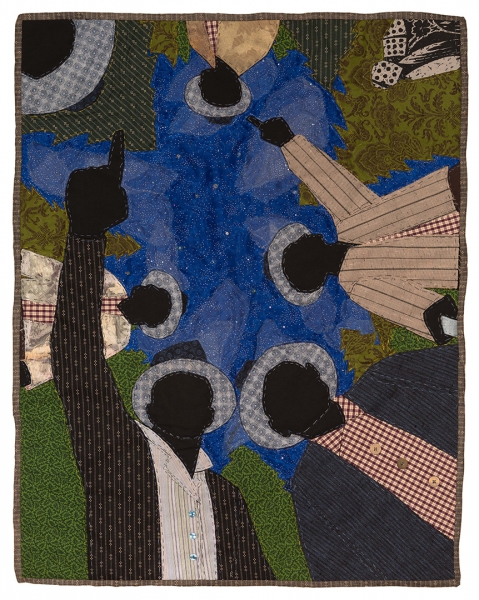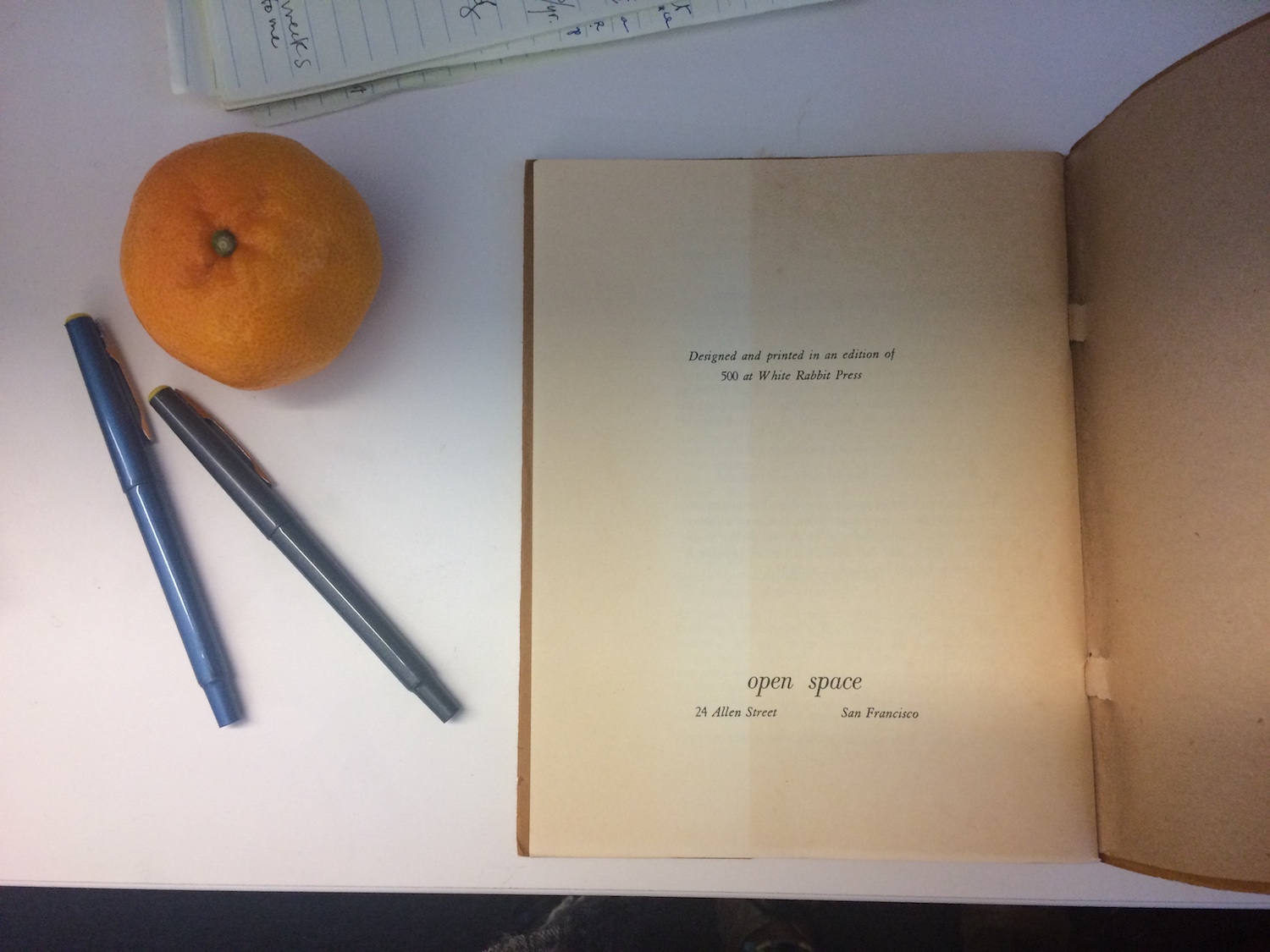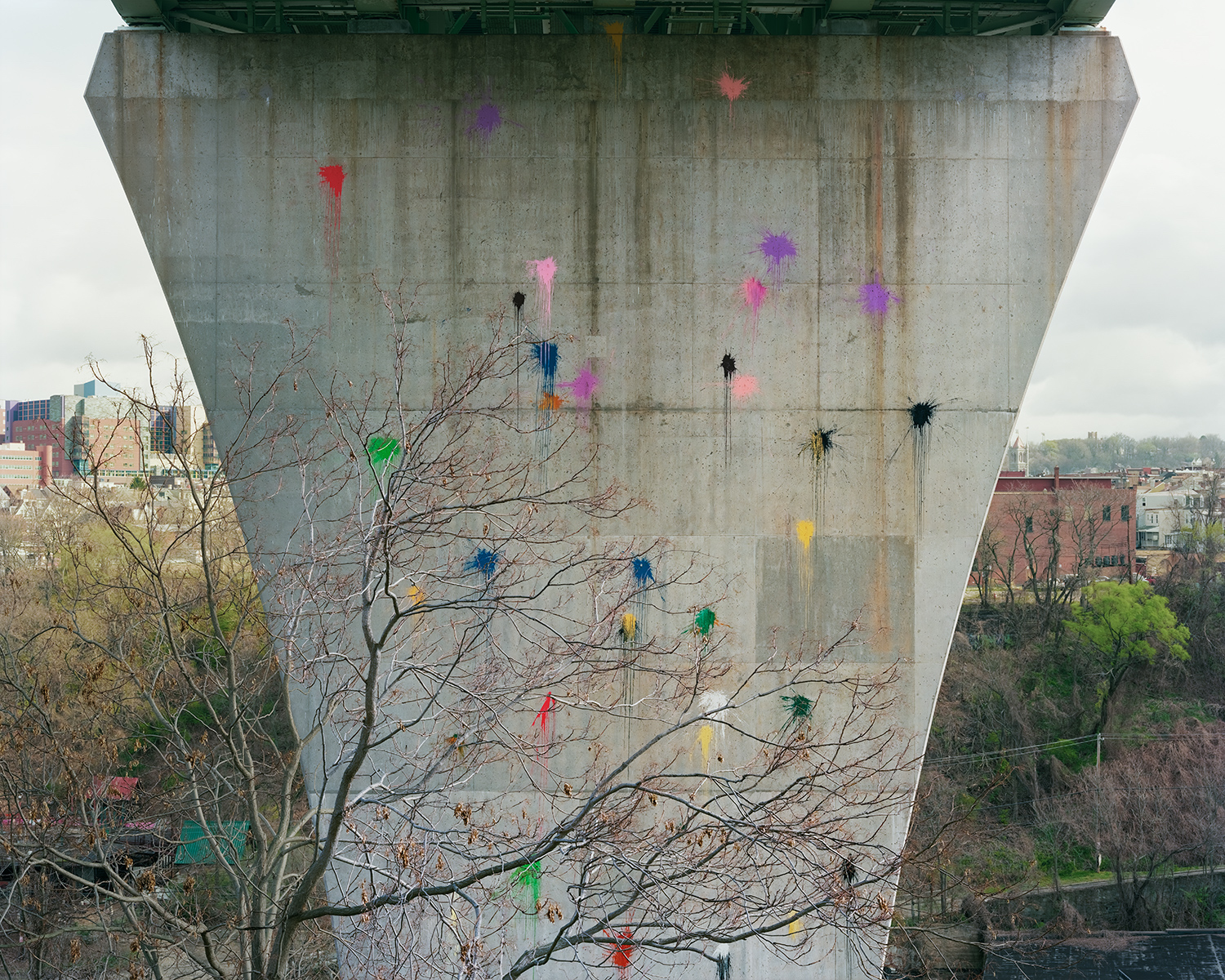Finding Adam Davies, A Conversation by Ben Marcin
Adam Davies is an exciting, young photographer relatively new to Baltimore, a resident artist at the Creative Alliance. Unlike most photographers working today, Adam has largely eschewed the digital revolution that has exploded across the photography scene and opts instead to work with a very large 8×10” metal view camera. The results are pictures that transcend normal viewing conventions.
Having used large format cameras in the past, I know how difficult it is to work with this setup, especially knowing how easy it would be to create high-resolution images on any of the latest 50 megapixel DSLR cameras out on the market today. At a hundred bucks for a single drum scan made from one of his 8×10” negatives, Adam is a firm believer in creating the best possible image to portray his vision as an artist. The results are convincing — so much so that I myself have brought several of my large film cameras out of an extended retirement.
Adam was kind enough to answer a series of questions I posed for this article, in advance of Reroutings, his exhibition which opens at Creative Alliance on Saturday, March 10.

How did we first meet?
It was recently, I think last October, that we were introduced by Jonathan Blaustein, a photographer and writer who knew both of our work. About a year before (right when I first had moved to Baltimore), I had seen one of your photographs from the “Last House Standing” series at the BMA, and really liked it. So I was excited to meet you as it seemed like we had a lot of overlapping interests.
When did photography first come into the picture for you?
I discovered photography in my first year of college. I had a great teacher, Roswell Angier, who let me basically live in the darkroom for the rest of my undergrad. Roswell was much more of a street photographer (his work primarily dealt with people’s interactions in public spaces), but he instilled in me the idea that a camera gives you a license to explore. I was a shy kid as a teenager, but I was fascinated by the architecture and infrastructure of the city, particularly discovering places that were hidden or overlooked. I think early on I just was trying to learn and experience as much as I could with what was going on underground, both literally and figuratively!
I also fell in love with working in the darkroom and the delayed gratification of working with film — that I didn’t know which images I would get until after the film was processed and I made a contact sheet. I still love the days when I get a bunch of newly developed negatives and see what the images look like for the first time.
This was at Harvard?
As an undergraduate, I was fortunate to have a number of amazing teachers who really inspired me. Until college, the idea of being an artist was something I didn’t really understand or think possible. Because of this, I felt it was really important to advocate for the role of the arts in society and so I went to Harvard for an EdM (Masters in Education) in Arts Education. There I was particularly focused on museums, adult education, and public policy. Following that I worked at the Center for Advanced Visual Studies (CAVS) at MIT and did some teaching. But after a while I felt like I was becoming disconnected from making art and made a difficult decision to go back to grad school for my MFA at Carnegie Mellon.
And then you worked at the National Gallery of Art?
After getting my MFA, I taught at local universities in Pittsburgh for a couple of years. I also managed to get a series of artist residencies that sent me to Wyoming, Virginia, upstate New York, Provincetown, and Marfa, Texas. By the end of these travels, I ended up working at the National Gallery of Art, Washington, first as photographer of the permanent collection and then as an Lecturer and Media Specialist in the Education Department. I left the NGA a few years ago to focus on my own work again and moved to Baltimore in 2016 to be an artist-in-residence at Creative Alliance.
Why the 8×10? Everybody else seems to have embraced the wonders of the digital revolution.
It’s a crazy camera, but it just works for me! I find it really different than most other cameras out there, either digital or film. First of all, it is so big that it has to be used on a tripod. So it forces me to work slowly and think about my images and how I get to a location. If I take three or four photographs in a full day of working, that is a very productive day.
The 8×10 lets you compose and construct photographs in a way that other cameras don’t. I am really interested in how a camera perceives the world differently from the way in which we do with our eyes. By moving the lens and the back of the camera separately from each other, I can optically manipulate the perspective and angle of focus of the image.
I also love the quality of film, its look and grain structure. The color negatives have a level of resolution and subtlety of color that still can’t be matched by the best digital cameras. It lets me work at a scale where the photos are really immersive and filled with details — for this exhibition the prints are 58×70” (approximately 5×6 feet) in size.

What and who are your primary influences? Who helped you make you what you are today?
I have always been fascinated with public spaces and architecture — my grandfather was an architect. In the past ten years, I have photographed intersections between natural and manmade structures, particularly public infrastructure. My interest in the way such structures accumulate layers of history has been a driving factor in my current exploration of graffiti.
I am deeply influenced by the lightbox photographs of Jeff Wall, the installations of Christian Boltanski, and the films of Chris Marker. I am very interested in how photographs can be installed and presented to develop a deeper context or relationship to the work. Stylistically, my photographs are informed by the Düsseldorf School (Gursky, Höfer, Hütte, and Struth), Luigi Ghirri, and the films of Andrei Tarkovsky. Martha Cooper, Henry Chalfant, and Roger Gastman help shape my thinking about graffiti. Politically and philosophically, I am drawn to the writings of Guy Debord and Walter Benjamin.
What is it that you see through that big ground glass? Figuratively speaking, of course.
I have always liked urban exploration and the process of figuring out how systems work, for example, where tunnels lead, what the inside of bridges look like, or how exit ramps of expressways are laid out. I love discovering the mysterious in the mundane. These spaces represent another way of experiencing a city or environment, and they incorporate a completely different culture and aesthetic.
A lot of the public infrastructure, particularly in Baltimore and Pittsburgh, where I have been focused, is marginalized or neglected. There is a subculture of people—graffiti artists, the homeless, drug users, or maintenance workers—utilizing these spaces and they all leave different traces on the architecture. I am interested in the stories these spaces tell and their potential to create new ways of seeing the world inside of something familiar.

Please talk about Reroutings, the new work and show opening at Creative Alliance. From what I’ve seen in your large studio space, I expect this to be a phenomenal exhibit.
Reroutings is my first solo show in Baltimore, at the Creative Alliance main gallery. There are ten large-scale images in the exhibition, primarily taken in Baltimore and Pittsburgh over the past two years, each 56×70” in size.
The title is a riff on the English translation of détournement — a phrase coined by Guy Debord describing a method of art-making that critiques the intended goals of the State. The images I make are not rooted in a documentary tradition but rather are reflective, psychological portraits of places. The photographs I am exhibiting play with how we experience public infrastructure and how we read it. A number of them have graffiti in the images, and this graffiti raises multiple, often contradictory, ways the space can be understood. How do we read such acts? Are they humorous? Anti-authoritarian? Cries for help? Hence this idea of “rerouting.”
Going back to why I use an 8×10, there are a lot of details within each image and the size and detail of the prints encourage close looking. Jeremy Stern at Creative Alliance has been great at working with me to create an immersive environment in the gallery to show these works. The gallery space will be darkened —the walls will be painted black and there’ll be little ambient light. Only the photographs will be lit giving the impression that they’re illuminated from behind. There is also some great programming in conjunction with the show, including performances by Alex Zhang Hungtai and Adam Rosenblatt and a lecture by David Gariff.
Where are you going next?
Right now I am primarily focused on this exhibition! Longer term, I really want to continue exploring the ideas in this show and take the opportunity in my remaining year at Creative Alliance to build on this project by photographing heavily in the Baltimore area. I am passionate about exploring graffiti further in my photography, it speaks to sentiments that we prefer to overlook — feelings of social alienation or political nationalism — and issues we cover up — rampant income inequality and the push towards gentrification, drug use, homelessness, faulty civic planning, underfunded public infrastructure. In an environment in which income inequality is becoming ever greater, and acts of dissent and difference are increasingly marginalized, this work is vital.
I’m a music-holic so I’ve got to ask: what’s your favorite music?
I’m all over the place. I have a real soft spot for a lot of the experimental music of the 1970s-early 80s — from Roxy Music, to Eno, to no-wave and post-punk. I also love Jamaican dub, ska, and rocksteady. And then, I am always interested in new music, I am really looking forward to hearing Alex Zhang Hungtai (from Dirty Beaches and Last Lizard) perform at the March 10 opening. I think he creates beautiful soundscapes and atmospheres in his music. I was listening to his work a lot while driving to different locations to photograph, so I think his music probably subconsciously influenced the mood and tone of many of the pictures in Reroutings.
What is something that people might find interesting about you unrelated to photography?
I dig analogue. I like old audio equipment, I collect old film cameras, and I have way too many books. I am sure some of this is sentimental, but I also like the materiality of these things, the way a book, record, or film feels in the hand, the way it takes up space, the way it looks. I am not against the digital world, but I like objects that hold information, I feel we interact with them differently, more personally.

website: www.adamdavies.net
instagram: @a.d.a.m.d.a.v.i.e.s
Exhibition info:
Reroutings at Creative Alliance
March 10 – April 9, 2018
RECEPTION Sat, Mar 10 | 6 – 9pm | FREE
Performance with ALEX ZHANG HUNGTAI (from Dirty Beaches, Last Lizard)
Sat, Mar 10 | 7:30pm | FREE
Alex Zhang Hungtai, known for his lo-fi electro crooning project Dirty Beaches, juxtaposes electronic music with the large-format photographs of artist Adam Davies.
GALLERY TALK Sat, Mar 17 | 5pm | FREE
RE-CALIBRATIONS: PERFORMANCE BY ADAM ROSENBLATT
Sat, Mar 24, 7pm – 9pm| FREE
Using only reclaimed pieces of wood, percussionist Adam Rosenblatt will create a temporary structure and fill the gallery space with meditative and hypnotic rhythms, building a dialogue with the exhibition Reroutings.
LECTURE ON CONTEMPORARY PHOTOGRAPHY BY DAVID GARIFF
Sun, Apr 8 | 1pm | FREE, RSVP Required
Senior Lecturer at the National Gallery of Art, Washington.








